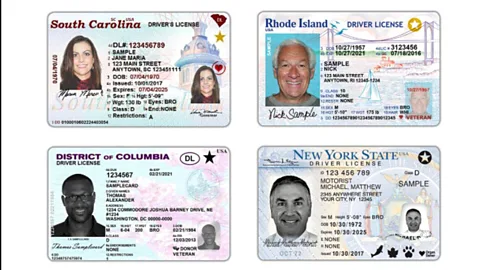Understanding REAL ID: What Travelers Need to Know Before Flying

As air travel regulations evolve in the United States, the introduction of the REAL ID has become a crucial topic for anyone planning to fly domestically. With the deadline for enforcement arriving soon, understanding what a REAL ID is, why it's required, and how to obtain one is essential for hassle-free travel.
What Is a REAL ID?
The REAL ID is a federally compliant identification card that meets higher security standards set by the U.S. government after the 9/11 Commission's recommendations. Unlike a standard driver's license, a REAL ID features a gold or black star in the top-right corner, signifying its enhanced security design. You’ll need this form of ID, or another accepted document like a passport, to board domestic flights and access secure federal facilities. This move aims to bolster national safety and prevent the use of fraudulent identification documents during air travel.
For more details on what differentiates a REAL ID from other forms of identification, read What you need to know about US Real ID from the BBC.
Who Needs a REAL ID?
Any U.S. traveler aged 18 or older flying domestically must present a REAL ID, a valid passport, or another form of TSA-acceptable identification at security checkpoints. Children under 18 can still fly with adults and do not require an ID. Even TSA PreCheck members must adhere to this rule. Keep in mind that enforcement begins soon, and those without compliant identification could face delays or be denied boarding. The New York Times offers insight into the new requirements and possible extra screening: Read more.
How to Get a REAL ID
Obtaining a REAL ID involves a few extra steps compared to a regular driver’s license. You will need to visit your local Department of Motor Vehicles (DMV), provide proof of identity (such as a passport or birth certificate), proof of social security number, and proof of address (like a utility bill). Requirements can vary by state, so it’s important to check your state DMV’s website for specifics. Costs also vary, so plan ahead. Once you have applied, you may receive a temporary identification to use until your REAL ID arrives in the mail, a process that can take several weeks.
If you’re traveling soon and concerned about enforcement, review DMV: Real ID Deadline not a deadline, just enforcement for what to expect at the airport and how TSA is currently handling travelers who don’t yet have a REAL ID.
What Happens If You Don’t Have a REAL ID?
Travelers who arrive at the airport without a REAL ID or other accepted identification may face additional screening or be turned away. According to the Department of Homeland Security, TSA officers could request further verification, which can be time-consuming and stressful. It’s always a good idea to arrive early and be prepared with the correct documentation. In addition to a REAL ID or passport, trusted traveler cards like Global Entry or an enhanced driver’s license are sometimes accepted, but verify with the TSA before you fly, as rules can change.
Why Has the REAL ID Been Implemented?
The REAL ID Act aims to improve security standards for state-issued identification. This initiative was a response to 9/11 and, though passage began nearly two decades ago, implementation was delayed due to legislative and pandemic challenges. As full enforcement is now underway, travelers should expect increased scrutiny at airport checkpoints and possibly longer waiting times during the initial rollout phase.
Tips for a Smooth Transition
- Check your identification for the REAL ID star.
- Schedule your DMV appointment as early as possible.
- Gather all necessary documents ahead of your visit.
- Arrive at the airport early—at least two hours before your domestic flight.
- Double-check evolving requirements on reliable government and travel sites.
Conclusion
The REAL ID is not just another piece of plastic—it represents a significant change in U.S. travel security protocols. By understanding the requirements and preparing in advance, you can ensure you’re ready for your next domestic flight. Don’t wait until the last minute; make sure your identification meets the latest federal travel standards so you can travel with confidence.